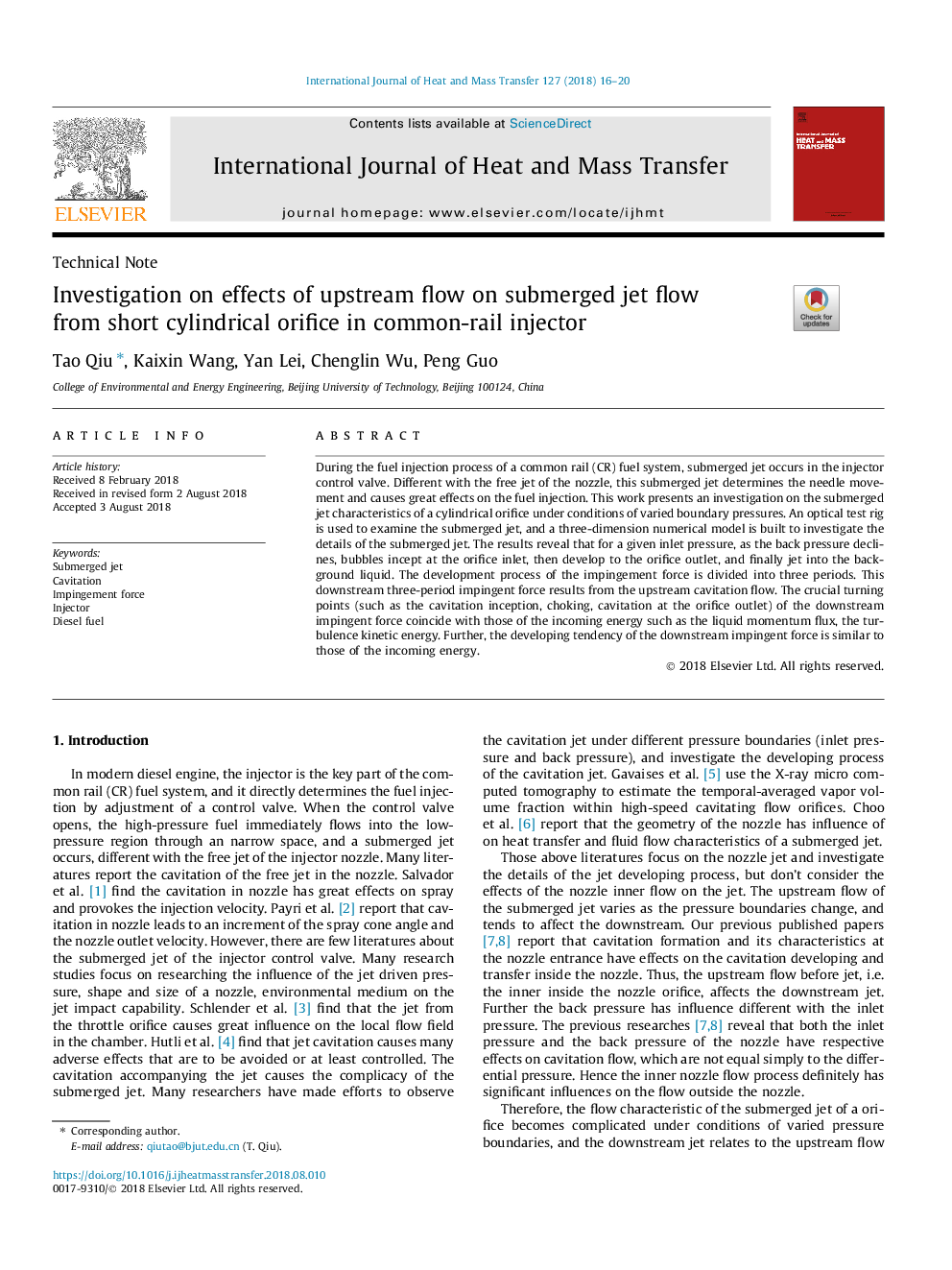| Article ID | Journal | Published Year | Pages | File Type |
|---|---|---|---|---|
| 8942050 | International Journal of Heat and Mass Transfer | 2018 | 5 Pages |
Abstract
During the fuel injection process of a common rail (CR) fuel system, submerged jet occurs in the injector control valve. Different with the free jet of the nozzle, this submerged jet determines the needle movement and causes great effects on the fuel injection. This work presents an investigation on the submerged jet characteristics of a cylindrical orifice under conditions of varied boundary pressures. An optical test rig is used to examine the submerged jet, and a three-dimension numerical model is built to investigate the details of the submerged jet. The results reveal that for a given inlet pressure, as the back pressure declines, bubbles incept at the orifice inlet, then develop to the orifice outlet, and finally jet into the background liquid. The development process of the impingement force is divided into three periods. This downstream three-period impingent force results from the upstream cavitation flow. The crucial turning points (such as the cavitation inception, choking, cavitation at the orifice outlet) of the downstream impingent force coincide with those of the incoming energy such as the liquid momentum flux, the turbulence kinetic energy. Further, the developing tendency of the downstream impingent force is similar to those of the incoming energy.
Related Topics
Physical Sciences and Engineering
Chemical Engineering
Fluid Flow and Transfer Processes
Authors
Tao Qiu, Kaixin Wang, Yan Lei, Chenglin Wu, Peng Guo,
